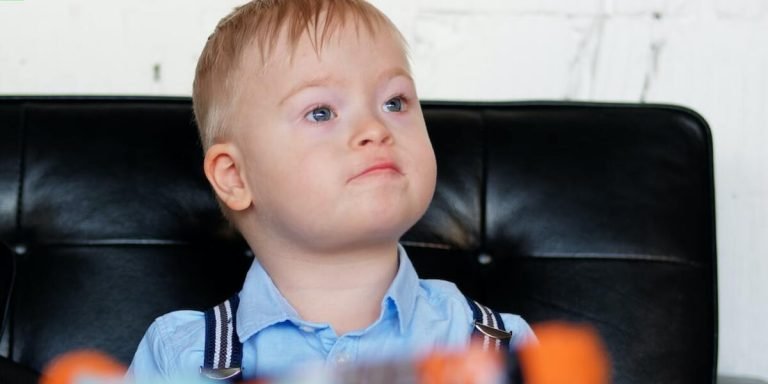What Qualifies a Child for an IEP: Understanding the Assessment Process
Have you ever wondered “what qualifies a child for an IEP?” As parents or educators, knowing the intricacies of Individualized Education Programs (IEPs) can seem overwhelming. However, understanding this crucial aspect of special education resources and support is fundamental to ensuring that children with academic disabilities receive adequate assistance specifically tailored to their unique needs.
The process leading towards securing an IEP involves several meticulous steps – from identifying learning difficulties through general interventions, conducting formal assessments by trained professionals to meeting stringent eligibility criteria set forth by state laws. This blog post aims at demystifying these aspects so as to aid your informed involvement in deciding what’s best for the child on his journey towards effective learning.
Did you know?
Did you know? The U.S. Department of Education states that a child must have one or more of the 13 specific disabilities, affecting their educational performance significantly, to be eligible for an Individualized Education Program (IEP).
Understanding the IEP Eligibility Process
Navigating the landscape of child education can often appear daunting, especially when it involves understanding special resources and support such as an Individualized Education Program (IEP). In recent years, technology has significantly streamlined this process, from assisting in identifying eligibility to monitoring progress. However, what exactly qualifies a child for an IEP remains unclear to many.
A child’s qualification for an IEP is determined primarily by their need for specialized instruction due to one or more identified disabilities affecting their academic performance. Typically administered through public schools under federal law IDEA (Individuals with Disabilities Education Act), these programs are tailor-made to address each student’s unique requirements. With advancements in educational technology tools like adaptive learning software and assistive devices, children who qualify now have wider access than ever before.
Understanding the IEP (Individualized Education Program) eligibility process is crucial because early identification can mean earlier intervention, potentially leading to better academic outcomes. New technology-based solutions are simplifying evaluation processes, providing accurate data inputs which make it easier to decide if a child meets the criteria set forth by IDEA (Individuals with Disabilities Education Act) 2004 regulations. Technology isn’t just transforming how students learn but also revolutionizing gateways towards inclusive classrooms.
Criteria for Qualifying a Child for an IEP
Determining “what qualifies a child for an IEP” is a pivotal part of the Special Education Resources and Support system. An Individualized Education Plan (IEP) offers customized learning strategies and approaches tailored to accommodate children with special needs.
Firstly, it’s important to understand that eligibility isn’t simply based on having a disability or challenge. There are specific criteria that need consideration when assessing if your child would benefit from an IEP in 2023’s educational landscape.
One crucial prerequisite is matching the federal government’s definition of ‘children with disabilities.’ This broad term includes thirteen categories such as autism, hearing impairment, visual impairment, emotional disturbance amongst others. However, falling into these categories doesn’t guarantee automatic qualification for an IEP program; there’s more involved!
Next comes academic performance assessment where educators focus on whether this disability hinders their ability to learn effectively compared to other kids in their age group. Despite meeting previous conditions if the said issue doesn’t affect classroom functionality significantly then approval may not be granted.
Educators also review how well they do within general education curriculum without any modifications before considering them under ‘special education’. The goal here is inclusivity – encouraging learners who can adapt satisfactorily despite challenges rather than immediately moving towards specialized plans.
Assessments and Evaluations: What Parents Should Know
The journey to establishing if your child qualifies for an Individualized Education Program (IEP) starts with assessments and evaluations. These comprehensive tests aim to understand your child’s learning strengths, weaknesses, and specific needs.
When discussing what qualifies a child for an IEP in 2023, it’s important to know that the evaluation process plays a crucial role. Comprehensive evaluations act as essential tools giving insights into how the child learns best while determining if they stand eligible under law.
Typically conducted by professionals like school psychologists or speech-language pathologists, these assessments are used within multiple settings such as at home or during classroom activities. Observing children in different environments helps gather valuable data on their performance across diverse situations.
Parents ought not fear these evaluations since they’re meant to help pinpoint areas where extra support may be needed rather than blaming any party involved. It provides educators vital information about each pupil’s unique skills which can enable them transform teaching methods suiting individual requirements thereby creating inclusive classrooms encouraging all students participate actively and learn effectively.
In regards of technology integration in education when considering Special Education Resources and Support systems; digital platforms have made conducting online IEPS easier whilst providing precise tracking metrics measuring student success rates more accurately over time compared traditional paper based assessment techniques from past years’.
Educational Strategies Tailored to Individual Needs
Understanding and mapping the educational needs of a child is an integral part of their development, especially for those who may require individualized education programs (IEPs). In today’s age where technology integration in education is at its peak, this feature plays a crucial role. The eligibility criteria to qualify for an IEP involves various aspects including learning disabilities or significant struggles with traditional teaching methods.
Keeping special education resources into focus, new technologies also support real-time information sharing between teachers and parents about students’ progress which contributes significantly towards creating effective IEPs. Regular updates help educators make necessary adjustments while planning upcoming lessons thereby enabling them to tailor-fit instruction methodologies according to the student’s pace of learning.
Developing Effective Teaching Plans for Students with Disabilities
Firstly, it’s crucial to acknowledge that every student is unique; they possess their own set of strengths and challenges in the learning environment. Often children with disabilities require tailored strategies and resources in order to learn effectively.
In recent years, technology has revolutionized this area significantly by providing innovative solutions aimed at making education more inclusive and learner-centered. For instance, assistive technologies such as speech-to-text programs or specialized keyboards aid students who struggle with traditional input methods.
The cornerstone of developing effective teaching plans lies within identifying each child’s individual needs early on. This involves detailed observations followed by assessments – both formal diagnostic evaluations as well as classroom performance reviews – conducted typically by school psychologists or other qualified professionals.
Once these requirements have been identified, educators then develop goals which are specific yet flexible enough to adapt over time according to progress made by the student throughout their educational journey.
Special emphasis should also be placed on integrating supportive resources alongside regular coursework while drafting IEPs — things like sign language interpreters for hearing-impaired learners or visual aids for those struggling with reading comprehension issues could prove beneficial here.
To add further precision & efficacy practically speaking implementing peer mentorship schemes where mainstream classmates partner up disabled ones helps foster social acceptance mutual understanding between them too thereby enhancing overall inclusivity within classrooms.
Incorporating Assistive Technology in Special Education
In the increasingly digital age of 2023, integrating assistive technology in special education has become crucial. The core idea behind this is to level the playing field for students with individual needs. But what qualifies a child for an Individualized Education Program (IEP)?
Typically, children who struggle significantly more than their peers or have recognized disabilities qualify for an IEP where tailored strategies are deployed to aid learning and growth.
Assistive technologies play a critical role as part of these strategies due to their potential both academically and socially within classrooms by helping kids engage effectively with educational content that they might otherwise find challenging.
For instance, text-to-speech software can help dyslexic learners read textual information at ease which not only boosts confidence but also fosters inclusion within mainstream classrooms.
Speech recognition tools facilitate communication among those struggling verbally while manoeuvrable hardware like joysticks enable physically handicapped students navigate computer interfaces seamlessly.
The scope doesn’t end here! Aided language stimulation programs allow non-verbal learners communicate through images meaningfully while audiobook platforms cater well towards visually impaired individuals alongside note-taking apps fostering organization skills in children grappling attention disorders.
Undeniably hence, instilling adaptive tech solutions aids personalized teaching approaches aligning perfectly under any kid’s IEP plan. What’s pivotal however is rendering necessary support around such resources so that none feels overwhelmed amidst technological seas!
Navigating Special Education Laws and Rights
Navigating the intricacies of special education laws and rights often seems like a minefield to most parents. Understanding what qualifies a child for an Individualized Education Program (IEP) is fundamental in this process. In 2023, integrating technology into education has made significant strides in facilitating this understanding.
Individuals with Disabilities Education Act (IDEA) advocates for children who have one or more of the thirteen specific disabilities listed within its mandate to receive appropriate public education just like their age mates without disabilities. Therefore, if your youngster falls under any category on IDEA’s list, they qualify for an IEP which is essentially tailored teaching strategies that accommodate their unique learning needs enabling them achieve academic success.
Technology plays quintessential roles in attaining inclusivity through adaptive devices such as speech recognition apps or software designed specifically that assistive kids can utilise during class time boosting not only participation but also independence despite disability constraints.
Parents and educators alike need to familiarize themselves with illegalities surrounding Special Education Resources and Support system available particularly how it works hand-in-hand with technology integration improving overall results. Websites offering extensive resources about digital tools suitable different types of learners experiencing various challenges are countless today which means getting quality information aiding decision making when crafting comprehensive IEP shouldn’t be daunting task anymore.
Understanding IDEA: The Foundation of Every IEP
Understanding the Individuals with Disabilities Education Act (IDEA) can provide valuable insights into what qualifies a child for an Individualized Education Program (IEP). IDEA, enacted in 1975 and regularly updated since then, has been instrumental in ensuring that children with disabilities receive free appropriate public education tailored to their individual needs.
Understanding IDEA is essential as it forms the basis of every IEP. Let’s explore some key aspects.
1. Child Find System: Under IDEA, states are obligated to identify, locate, and evaluate all children with disabilities who may need special education services.
2. Evaluation Process: Once a child has been identified as possibly needing special support under ADA safeguards from any ignoring or unjustly missing out scenarios arising due to procrastination or ignorance on either side.
3. Eligibility Determination: Post-evaluation determines if they qualify for services like physical therapy or speech-language pathology under one of thirteen categories including Autism Spectrum Disorder(ASD), Specific Learning Disability(SLD), Emotional Disturbance (ED).
4. Development of IEP: An eligible student’s first step towards receiving personalized educational guidance begins post this phase where educators draft objectives considering not just academic but social goals too which could aid students live fuller lives past school years too.
Advocacy and Legal Support for Children’s Educational Rights
Understanding special education laws and the rights of children can often seem complex for many parents. Furthermore, determining what qualifies a child for an IEP (Individualized Education Program) is usually an uphill task, particularly if you’re unfamiliar with the procedures involved.
Firstly, to put it in simplistic terms, an IEP refers to a legally binding document that spells out your child’s learning needs as well as the services that must be provided by their school. It forms part of IDEA (Individuals with Disabilities Education Act), crucial legislation passed in 1975 aimed at ensuring students with disabilities are given equal opportunities in public education.
Technology influences nearly every sector today, particularly our educational system, due to increased accessibility and convenience. It plays a crucial role in integrating tools into individual programs that meet each student’s unique needs. These tools:
- Make educational material accessible
- Aid students in achieving academic success amidst the pressures of curriculum standards and term goals
Educators set goals by assessing learners’ strengths and weaknesses and track progress using effective data analytics. This approach has drastically improved overall academic outcomes.
1. They must have one or more disabilities outlined by law.
2. The disability should adversely affect their educational performance.
3. Due to this impairment they need specialized instruction found within an IEP.
Conclusion
In wrapping up, it’s essential to always remember that understanding what qualifies a child for an IEP is not just about assessing their educational needs. It involves considering each child as an individual with unique strengths and areas of need, which requires collaboration between parents and educators to create the most effective learning plan.
We hope this article shed light on some aspects you might have been wondering about regarding the assessment process. We invite you check out further articles on our website, where we provide invaluable information aimed at helping both parents and educators navigate through the complex world of childhood education effectively.







